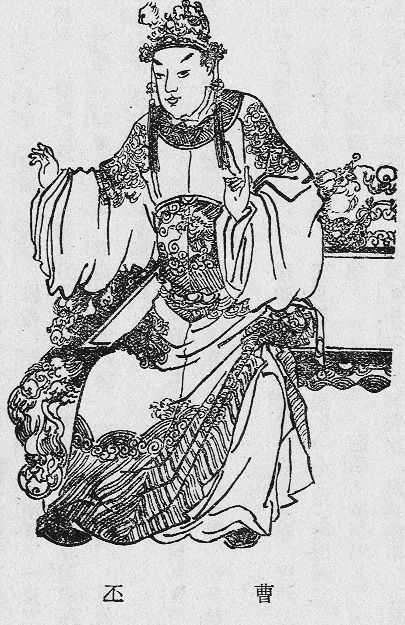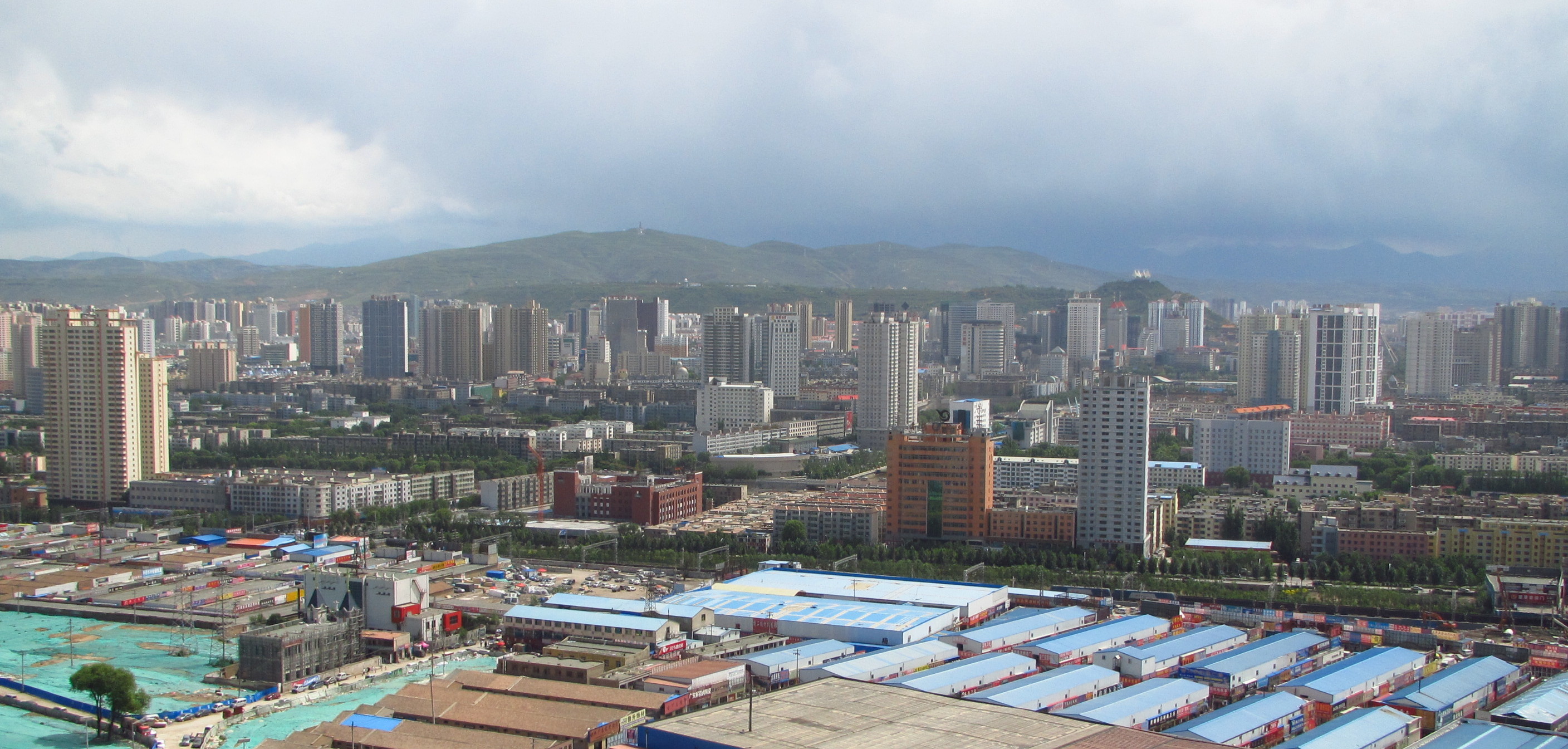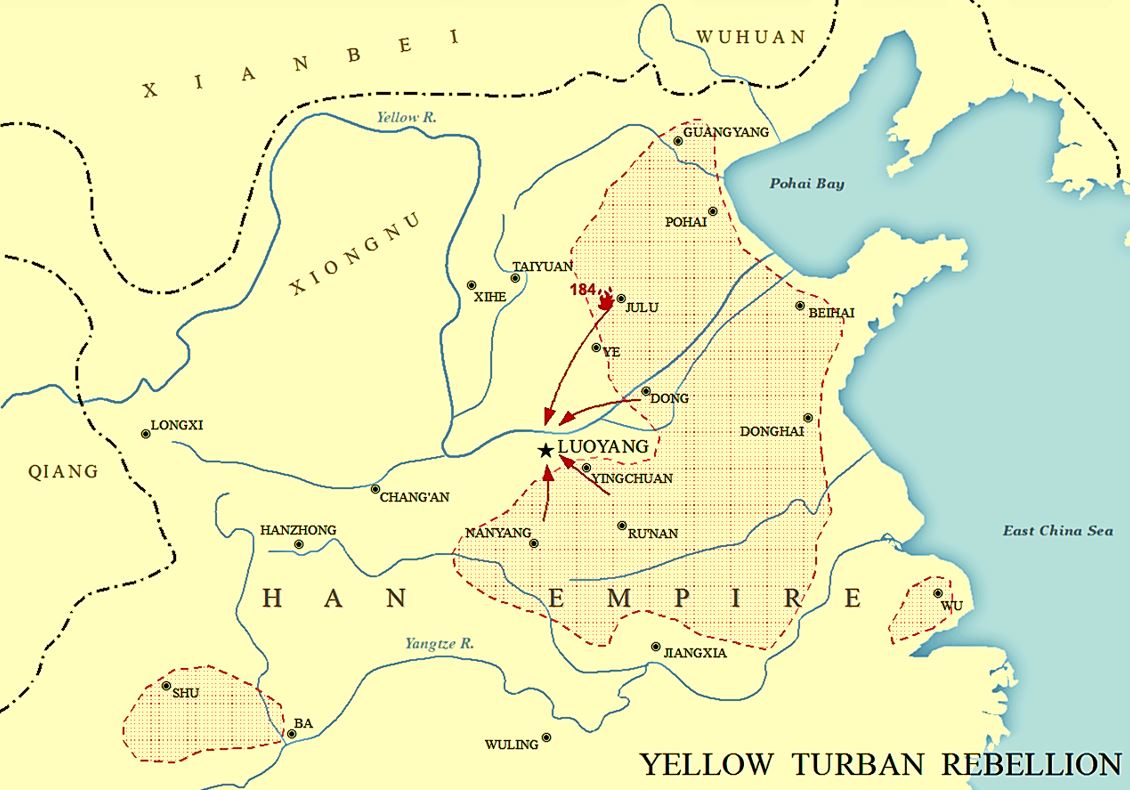|
Du Ji
Du Ji (early 160s – 224), courtesy name Bohou, was an official who lived in the late Eastern Han dynasty of China. He later served as a high-ranking official in the state of Cao Wei during the Three Kingdoms period. He had the reputation of being a model governor, valiant, loyal and wise. He was the grandfather of Du Yu, the author of the most influential ''Zuo Zhuan'' commentary, who gave the work its modern form. Early career Du Ji was from Duling County (), Jingzhao Commandery (), which is in present-day southeastern Xi'an, Shaanxi. When he was 19, he served in the convict labour section under the magistrate of Zheng County (鄭縣; present-day Hua County, Shaanxi). He personally saw all of the hundreds of convicts in the county prisons, weighed the severity of their transgressions, and despatched them to their labours accordingly. Following this, he was nominated as a ''xiaolian'' and appointed as a ''fucheng'' (府丞; an aide) in the Hanzhong stores office.''Records of ... [...More Info...] [...Related Items...] OR: [Wikipedia] [Google] [Baidu] |
Cao Pi
Cao Pi () (late 187 – 29 June 226), courtesy name Zihuan, was the first emperor of the state of Cao Wei in the Three Kingdoms period of China. He was the second son of Cao Cao, a warlord who lived in the late Eastern Han dynasty, but the eldest son among all the children born to Cao Cao by his concubine (later wife), Lady Bian. According to some historical records, he was often in the presence of court officials in order to gain their support. He was mostly in charge of defence at the start of his career. After the defeat of Cao Cao's rival Yuan Shao at the Battle of Guandu, he took Yuan Xi's wife, Lady Zhen, as a concubine, but in 221 Lady Zhen died and Guo Nüwang became empress. On 25 November 220, Cao Pi forced Emperor Xian, the last ruler of the Eastern Han dynasty, to abdicate in his favour, after which on 11 December 220 he proclaimed himself emperor and established the state of Cao Wei. Cao Pi continued the wars against the states of Shu Han and Eastern Wu, ... [...More Info...] [...Related Items...] OR: [Wikipedia] [Google] [Baidu] |
Three Kingdoms
The Three Kingdoms of Cao Wei, Shu Han, and Eastern Wu dominated China from AD 220 to 280 following the end of the Han dynasty. This period was preceded by the Eastern Han dynasty and followed by the Jin dynasty (266–420), Western Jin dynasty. Academically, the periodisation begins with the establishment of Cao Wei in 220 and ends with the conquest of Wu by Jin in 280. The period immediately preceding the Three Kingdoms, from 184 to 220, was marked by chaotic infighting among warlords across China as Han authority collapsed. The period from 220 to 263 was marked by a comparatively stable arrangement between Cao Wei, Shu Han, and Eastern Wu. This stability broke down with the conquest of Shu by Wei in 263, followed by the usurpation of Cao Wei by Jin in 266 and ultimately the conquest of Wu by Jin in 280. The Three Kingdoms period including the collapse of the Han was one of the most dangerous in Chinese history due to multiple plagues, widespread famines, and civil war. A n ... [...More Info...] [...Related Items...] OR: [Wikipedia] [Google] [Baidu] |
Xining
Xining is the Capital (political), capital and most populous city of Qinghai province in western China and the largest city on the Tibetan Plateau. As of the 2020 census, it had 2,467,965 inhabitants (2,208,708 as of 2010), of whom 1,954,795 lived in the built-up (or metro) area made of 5 urban districts. The city lies in the Huangshui River, Huangshui River Valley, also known as Tsongkha (Tibetan script, Tibetan: ཙོང་ཁ་), and owing to its high altitude, has a cool climate on the borderline between Semi-arid climate#Cold semi-arid climates, cool semi-arid and dry winter humid continental climate, humid continental. Xining was a commercial hub along the Northern Silk Road's Hexi Corridor for over 2000 years, and was a stronghold of the Han dynasty, Han, Sui dynasty, Sui, Tang dynasty, Tang, and Song dynasty, Song dynasties' resistance against nomadic attacks from the west. Although long a part of Gansu province, Xining was added to Qinghai in 1928. Xining holds sites ... [...More Info...] [...Related Items...] OR: [Wikipedia] [Google] [Baidu] |
Sikong (office)
The Ministry of Works or was one of the Six Ministries under the Department of State Affairs in imperial China. The Ministry of Works is also commonly translated into English as the or History The ministry was established during the Sui dynasty as one of the six functional divisions of the Department of State Affairs. It was also part of the same department during the Five Dynasties period and the Song dynasty. After the merger of the " three departments" (''Zhongshu Sheng'', '' Menxia Sheng'' and '' Shangshu Sheng''), it was reassigned to the ''Zhongshu Sheng'' (Secretariat) in the Yuan Empire and later the Ming Empire. In 1380, the office of Secretariat was abolished and the ministries, including the Ministry of Works, became independent and continued to report directly to the emperor. Under the Ming and Qing, it lost some influence in favor of agencies run by palace eunuchs, provincial coordinators, and governors. It was usually considered the weakest of the six ministr ... [...More Info...] [...Related Items...] OR: [Wikipedia] [Google] [Baidu] |
Xun Yu
Xun Yu (163–212), courtesy name Wenruo, was a Chinese military official and politician who served as an adviser to the warlord Cao Cao during the late Eastern Han dynasty of China. Early life Xun Yu was from Yingchuan Commandery (around present-day Xuchang, Henan), and was born into a family of government officials. He was described in historical records as a tall and handsome gentleman. His grandfather, Xun Shu, served as a local governor and had eight sons who were nicknamed the "Eight Dragons of the Xun Family"; an uncle of Xun Yu, Xun Shuang, served as one of the Three Ducal Ministers, while Xun Yu's father Xun Gun was the chancellor of the principality of Jibei. Xun Yu proved to be a talented youth and was evaluated by the scholar He Yong as "someone capable of assisting kings" (). In 189, he was nominated as a '' xiaolian'' (civil service candidate) and began his career in the civil service. When the warlord Dong Zhuo seized control of the capital Luoyang, Xun ... [...More Info...] [...Related Items...] OR: [Wikipedia] [Google] [Baidu] |
Gao Gan
Gao Gan () (died 206), courtesy name Yuancai, was a minor warlord who lived during the late Eastern Han dynasty of China. He was a maternal nephew and subordinate of the warlord Yuan Shao. Life Gao Gan was from an influential family in Yu County (), Chenliu Commandery (), which is around present-day Qi County, Kaifeng, Henan. He was also a maternal nephew of the warlord Yuan Shao, who controlled most of the territories in northern China from the 190s to his death in 202. Gao Gan held the appointment of Inspector () of Bing Province, which was one of the four provinces in northern China under Yuan Shao's control around 200 CE. He governed Bing Province for about seven years. In 200 CE, Yuan Shao lost the Battle of Guandu against his rival, Cao Cao, who controlled the Han central government and the figurehead Emperor Xian. After Yuan Shao's defeat, only the troops under Gao Gan's command in Bing Province, numbering about 50,000, were the most organised and highest in morale a ... [...More Info...] [...Related Items...] OR: [Wikipedia] [Google] [Baidu] |
Hunan
Hunan is an inland Provinces of China, province in Central China. Located in the middle reaches of the Yangtze watershed, it borders the Administrative divisions of China, province-level divisions of Hubei to the north, Jiangxi to the east, Guangdong and Guangxi to the south, and Guizhou and Chongqing to the northwest. Its capital and largest city is Changsha, which abuts the Xiang River. Hengyang, Zhuzhou, and Yueyang are among its most populous urban cities. With a population of just over 66 million residing in an area of approximately , it is China's List of Chinese administrative divisions by population, 7th-most populous province, the third-most populous among landlocked provinces (after Henan and Sichuan), the third-most populous in South Central China (after Guangdong and Henan), and the second-most populous province in Central China. It is the largest province in South Central China and the fourth-largest landlocked province. Hunan's Gross domestic product#Nominal GDP ... [...More Info...] [...Related Items...] OR: [Wikipedia] [Google] [Baidu] |
Hubei
Hubei is a province of China, province in Central China. It has the List of Chinese provincial-level divisions by GDP, seventh-largest economy among Chinese provinces, the second-largest within Central China, and the third-largest among inland provinces. Its provincial capital at Wuhan serves as a major political, cultural, and economic hub for the region. Hubei is associated with the historical state of E that existed during the Western Zhou dynasty (771 BCE). Its name means 'north of the lake', referring to Dongting Lake. It borders Henan to the north, Anhui and Jiangxi to the east, Hunan to the south, and Chongqing and Shaanxi to the west. The high-profile Three Gorges Dam is located at Yichang in the west of the province. History The Hubei region was home to sophisticated Neolithic cultures. By the Spring and Autumn period (770–476 BC), the territory of today's Hubei formed part of the powerful Chu (state), State of Chu. Chu, nominally a tributary state of the Zh ... [...More Info...] [...Related Items...] OR: [Wikipedia] [Google] [Baidu] |
Jing Province
Jingzhou or Jing Province was one of the Nine Provinces of ancient China referenced in early Chinese texts such as the ''Yu Gong, Tribute of Yu'', ''Erya'', and ''Rites of Zhou''. Jingzhou became an administrative division during the reign of Emperor Wu of Han, Emperor Wu (r. 141–87 BCE) in the Western Han dynasty (206 BCE–9 CE). It usually corresponded with the modern-day provinces of Hubei and Hunan until the Sui dynasty, after which it referred to the city of Jingzhou. History Pre-Qin era In the Warring States period, the Chu (state), Chu state covered most of present-day Hubei and Hunan, the areas that would form Jingzhou in a later era. The Qin (state), Qin state dropped the name "Chu" (楚) (literally "chaste tree") and used its synonym "Jing" (荊) instead to avoid a naming taboo, since the personal name of Qin's King Zhuangxiang of Qin, King Zhuangxiang (281–247 BCE) was "Zichu" (子楚; lit. "son of Chu") because his adoptive mother, Lady Huayang, was fro ... [...More Info...] [...Related Items...] OR: [Wikipedia] [Google] [Baidu] |
End Of The Han Dynasty
The end of the (Eastern) Han dynasty was the period of History of China, Chinese history from 189 to 220 CE, roughly coinciding with the tumultuous reign of the Han dynasty's last ruler, Emperor Xian of Han, Emperor Xian. It was followed by the Three Kingdoms era (220–280 CE). During the end of the Han dynasty, the country was thrown into turmoil by the Yellow Turban Rebellion (184–205). Meanwhile, the Han Empire's institutions were destroyed by the warlord Dong Zhuo and fractured into regional regimes ruled by various warlords, some of whom were nobles and officials of the Han imperial court. The warlord Cao Cao took control of Emperor Xian and his court in 196 and began gradually reunifying the empire. Cao Cao ostensibly operated under Emperor Xian's rule, though in reality the emperor was a hostage. Cao Cao's efforts to reunify China were rebuffed at the Battle of Red Cliffs in 208-209, when his armies were defeated by the allied forces of Sun Quan and Liu Bei. The Han d ... [...More Info...] [...Related Items...] OR: [Wikipedia] [Google] [Baidu] |
Hanzhong
Hanzhong ( zh, s= , t= , l=middle of the Han River (Hubei), Han River; abbreviation: Han) is a prefecture-level city in Southern Shaanxi, the southwest of Shaanxi, Shaanxi province, China, bordering the provinces of Sichuan to the south and Gansu to the west. The founder of the Han dynasty, Liu Bang, was once enfeoffed as the king of the Hanzhong region after overthrowing the Qin dynasty. During the Chu-Han contention, Liu Bang shortened his title to the King of Han (), and later used it as the name of his imperial dynasty. In this way, Hanzhong was responsible for the naming of the Han dynasty, which was later hailed as the first golden age in imperial Chinese history and lends its name to Han Chinese, the principal ethnic group in China. Hanzhong is located at the modern headwater of the Han River, the largest tributary of the Yangtze River. Hanzhong city covers and is centered around the Hantai District. The prefecture-level city consists of two urban district and nine rura ... [...More Info...] [...Related Items...] OR: [Wikipedia] [Google] [Baidu] |
Xiaolian
Xiaolian (; literally " filial and incorrupt"), was the standard of nominating civil officers started by Emperor Wu of Han in 134 BC. It lasted until its replacement by the imperial examination system during the Sui dynasty. In Confucian philosophy, filial piety is a virtue of respect for one's parents and ancestors. onfucianism in Context Classic Philosophy and Contemporary Issues, East Asia and Beyond/ref> Under the advice of Dong Zhongshu, Emperor Wu ordered each commandery to recommend one filial and one incorrupt candidate for civil offices. Later the nomination became proportional; Emperor He of Han changed the proportion to one candidate for every 200,000 residents, and one for every 100,000 residents in ethnic minority regions. The nominator was also responsible if the nominee was charged with corruption, and could be punished if he refused to nominate qualified individuals. After the Han dynasty, high positions were usually nominated according to the Nine-rank system, s ... [...More Info...] [...Related Items...] OR: [Wikipedia] [Google] [Baidu] |






